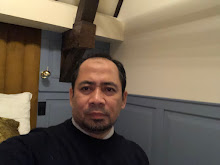I have been appointed by UKM Pakarunding as an EIA consultant for the proposed development of Lido Waterfront in Johor. The subject matter that was given to me was geology. This project involves the reclamation of some part of Johor Straights using sand material that will be brought in from Pengerang area (located on the South East tip of Malaysia). A fieldwork was completed, conducted for three days to do a geological study and to grab some sediment samples from the Johor Straights using grab sampler apparatus.
My research officer investing the geology of a cut slope near the proposed project site
Close up view of the geology comprising of an old alluvium. Coarse grain quartz can be seen very clearly on the surface of the outcrop
Sediment grab sampler was used to grab sediment samples from the bed bottom of the straight.
Two of my research assistants pulling the heavy cable attached to the grab sampler apparatus.

Scoping and sampling for the dredged sample. It is a black clay, and has a strong odour (rich in organic matter).
Photo taken on the boat after the completion of sampling. Everyone was happy!

